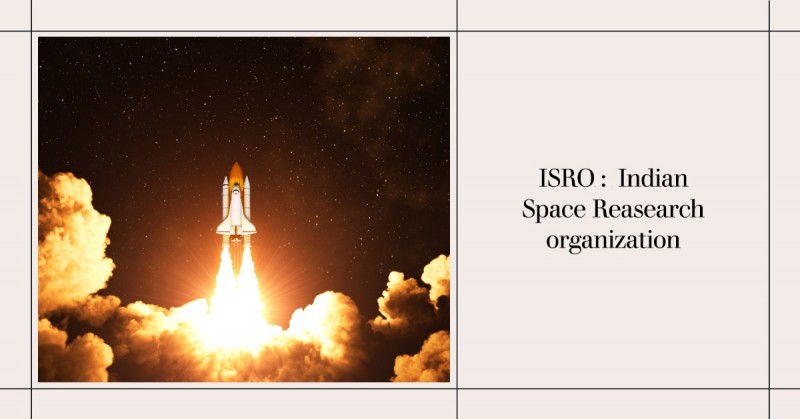
In the vast expanse of space exploration, India has made significant strides with its space program. At the forefront of this endeavor is the Indian Space Research Organisation (ISRO). Established in 1969, ISRO has become a symbol of India's scientific prowess and technological advancements. This article delves into the history, achievements, ongoing projects, and future prospects of ISRO, showcasing its impact on the nation and the world.
History of ISRO
ISRO traces its roots back to the establishment of the Indian National Committee for Space Research (INCOSPAR) in 1962. It aimed to develop space technology and harness it for the benefit of the nation. Five years later, on August 15, 1969, INCOSPAR was renamed ISRO, signifying India's official entry into the space race. Dr. Vikram Sarabhai, the founding father of India's space program, played a pivotal role in its inception.
Achievements and Milestones
ISRO's journey has been marked by numerous noteworthy achievements. In 1975, India successfully launched its first satellite, Aryabhata, into space. Since then, ISRO has achieved several significant milestones, including the successful launch of the Polar Satellite Launch Vehicle (PSLV) and the Geosynchronous Satellite Launch Vehicle (GSLV), which enabled India to place satellites in orbit and even embark on interplanetary missions.
Organizational Structure of ISRO
ISRO operates under the Department of Space, which is part of the Government of India. It consists of various centers, including the Indian Space Research Center (ISAC), the Vikram Sarabhai Space Center (VSSC), and the Satish Dhawan Space Center (SDSC), each specializing in different aspects of space research and development. The chairman of ISRO heads the organization, overseeing its activities and strategic decision-making.
Satellite Launches and Missions
ISRO has a remarkable track record of successful satellite launches and missions. Notably, the Mars Orbiter Mission (MOM), also known as Mangalyaan, captured the world's attention when it became the first interplanetary mission by India. Additionally, ISRO's satellite launches have played a crucial role in Earth observation, communication, weather forecasting, and navigation.
Key Projects and Collaborations
ISRO is actively involved in several ongoing projects. The Chandrayaan missions, aimed at exploring the moon, have garnered global acclaim. The ambitious Gaganyaan project, India's first manned space mission, is in progress and will make India the fourth nation to send humans to space. Furthermore, ISRO collaborates with international space agencies and organizations, fostering knowledge sharing and technological advancements.
ISRO's Contribution to National Development
ISRO's endeavors extend beyond scientific exploration; they have a direct impact on national development. The organization's satellite communication services have facilitated telemedicine, tele-education, and communication in remote areas. ISRO's Remote Sensing satellites have played a vital role in resource mapping, disaster management, and environmental monitoring. Moreover, the space program has spurred the growth of the domestic space industry, generating employment opportunities and driving innovation.
Technological Innovations
ISRO's pursuit of space exploration has led to significant technological innovations. The development of the cryogenic engine, used in the GSLV, showcased India's engineering prowess. ISRO has also made strides in miniaturization, resulting in the successful launch of multiple satellites in a single mission. The organization's focus on cost-effective solutions has allowed it to achieve remarkable feats within budget constraints.
Challenges and Future Endeavors
Despite its successes, ISRO faces various challenges. The complexity of space missions, evolving technologies, and global competition necessitate continuous innovation and improvement. ISRO is actively working on developing reusable launch vehicles and satellite constellations. It also aims to enhance its capabilities in areas such as space debris management, human spaceflight, and deep space exploration.
International Collaborations
ISRO recognizes the importance of international collaboration in the field of space exploration. It has collaborated with agencies like NASA, ESA, and ROSCOSMOS, fostering cooperation in areas of satellite launches, data sharing, and joint missions. These collaborations have not only accelerated technological advancements but also enhanced global cooperation in the pursuit of scientific knowledge.
Public Outreach and Education
ISRO actively engages in public outreach and education initiatives. It conducts various programs, such as lectures, workshops, and exhibitions, to inspire and educate students and the general public about space science and technology. ISRO's efforts aim to nurture scientific curiosity, cultivate a passion for space exploration, and develop the next generation of scientists and engineers.
Conclusion
ISRO's journey from humble beginnings to becoming a leading force in space research and exploration is a testament to India's scientific capabilities. Its remarkable achievements, ambitious projects, and societal impact have positioned India as a significant player in the global space arena. With a relentless pursuit of excellence and a commitment to innovation, ISRO continues to push boundaries and inspire generations to dream of the stars.
Veer Savarkar Setu: Mumbai's Upcoming Sea Link
Former Coach Advises Patience for Jasprit Bumrah's Full Recovery, Cautions Against Rushing Return